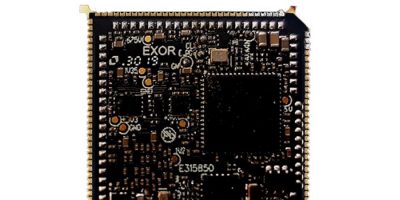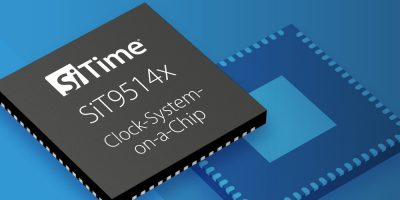Claimed to draw the industry’s lowest 6microA quiescent current under light load conditions, the ISL78264 dual buck and ISL78263 boost-buck controllers are designed for automotive always-on systems.
The 42V dual synchronous controllers have low quiescent current and integrated 2A source/3A sink MOSFET drivers that provide primary power stage solutions for the Renesas R-Car H3 and R-Car M3 SoCs.
The ISL78264 dual sync buck controller and the ISL78263 dual sync boost and buck controller offer energy conserving low quiescent current over a single buck channel. Both controllers simplify power supply design by integrating FET drivers that can deliver industry leading 96 per cent peak efficiency and over 10A output current. They also integrate feedback resistors and an external supply blocking diode for applications requiring cranking support, and programmable spread spectrum for addressing EMI interference challenges, says Renesas Electronics. Built-in EMI mitigation, with a switching frequency up to 2.2 MHz, also reduces the cost and size of EMI filtering/shielding.
The ISL78264 dual sync buck controller manages the intermediate first stage DC/DC conversion, stepping down the 12V battery system to 5.0V and 3.3V to power the vehicle’s electronic control unit (ECU), in-vehicle infotainment (IVI) and digital cockpit systems with 50 to 200W power levels. The ISL78263 dual sync boost and buck controller provides DC/DC conversion to support power levels of 25 to 100W, while providing a pre-boost if the battery voltage (VBAT) dips to 2.1V during a crank transient or a start/stop event.
The ISL78264 and ISL78263’s always-on operation and industry’s lowest quiescent current gives power system designers the extra margin they need to stay within their 100 microA power budget, and can even manage tight budgets down to 50 microA, says Niall Lyne, vice president, Automotive Analog Power & Video business division at Renesas Electronics. “The controllers’. The ISL78264 and ISL78263 integrate strong MOSFET drivers that deliver higher efficiency and power compared to other automotive buck or boost VBAT controller solutions,” he adds.
The ISL78264 and ISL78263 also include extensive protection for over voltage (OV), under voltage (UV), over current, over temperature and a bootstrap supply under voltage detection and refresh circuit to protect the high side MOSFET.
Both controllers are AEC-Q100 Grade-1 qualified for ambient operation of -40 to +125 degrees C.
Mass production quantities of the ISL78264 dual synchronous buck controller and ISL78263 dual synchronous boost and buck controller are available now in 5.0 x 5.0mm, 32-lead wettable flank QFN packages.







